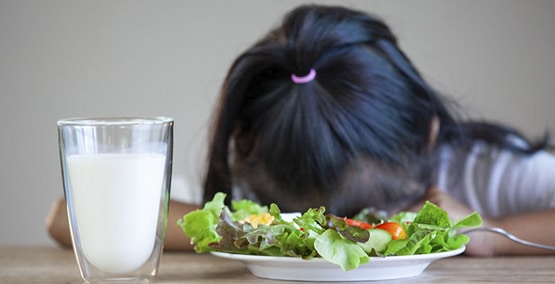
Tips to help picky or poor eaters
When we see so many children that are overweight , it's surprising to know that there are just as many children who don't eat well. Some kids eat all through the day so they have little room for meals. Others are too busy and distracted to eat. And some children don't have an appetite or develop a fear of eating (food aversion).
Tips to Help Picky or Poor Eaters:
- CONSISTENT FEEDING SCHEDULE: 3 meals + snacks. All meals and snacks should be timed about 2-4 hours apart. No eating between meals and snacks. Children who munching or drink throughout the day don't end up eating as much as with planned meals and snacks and are not hungry at mealtime.
- DURATION: Meals should last between 10-30 minutes, generally. Children with physical impairments may need up to 45 minutes. Set a timer if needed. Lingering longer over meals seems to lessen interest in eating, not increase it. Longer periods usually don't lead to eating more and often turns into food play. On the flip side, kids need to know the difference between meal time versus play time. 5 minutes is not long enough for meal time.
- ENVIRONMENT: Eat at the table and turn off the distractions. Strike up an interesting conversation that the children can participate in.
- DECREASE EMPHASIS ON EATING: No coaching, begging, bargaining or force feeding. It's OK to lightly praise your child for trying new foods or eating more than usual. You can also insist that there's no room for cookies/snacks, etc. if there's no room for their vegetables or main course
- SOLIDS: Offer 3-4 food groups per meal + 1-2 food groups per snack. Keep the portion size of each appropriate for age (1 portion = size of child's fist). Do not offer alternatives or more of favorite food if child refuses items. If your child does refuse meal/snack, he must wait until the next scheduled meal or snack. This works best when everyone follows the rules, including parents. A child won't understand why you're making him eat his broccoli if dad gets more mashed potatoes instead. Also, if you give a large portion of the child's favorite food then there will be no reason for him to try the other foods.
- CLEAR LIQUIDS: Allow up to 30-60 minutes before/after meals for clear liquids. Limit juice to 4 ounces per day of 100% juice (which can be diluted with water). Fluids can cut their appetite for food. You can also offer water, but water has no calories, so it's not appropriate when encouraging weight gain.
- MILK: Offer milk with meals/snacks–towards the end, after the majority of the meal. Too often children will drink so much of their milk, they don't have any need to eat the other foods.

Nutrition4Kids is privileged to have Bailey Koch on our advisory board and as the author of several blogposts and informative tables that help to clarify very important points in childhood nutrition. And as an Atlanta-based registered dietitian and a certified specialist in pediatrics, she has much to teach us about how to best feed children, even those who don't want to eat.
Dr. Stan




